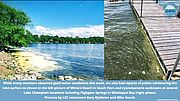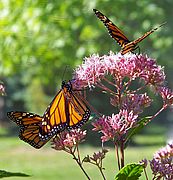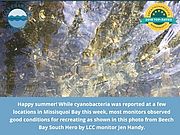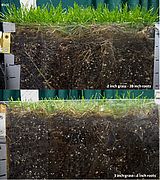We had reports from 135 different sites this week with low alert sitings of cyanobacteria from Lake Champlain’s Missisquoi Bay, St. Albans Bay and Knapp Pond in Cavendish, VT. High alert bloom conditions persisted at Outer Malletts Bay on June 26 and 27 and improved to low alert conditions on Friday. Happily, most other monitors reported good conditions.
News from Selected Month
This article is a continuation of the fall 2018 article on raising Monarch butterflies for the fall migration. Both articles were written by Laura Pratt, LCC’s current ECO AmeriCorps Education & Outreach Coordinator, who raised monarchs in her home last year. Monarch butterflies are important pollinators in the Lake Champlain watershed. They rely on milkweed during their caterpillar stage – a plant which is growing scarce with an increase in urbanization and pesticide use. However, you can make a difference by planting native varieties of milkweed in your garden, encouraging your town to replace lawn with pollinator gardens where possible, and even by raising monarch butterflies yourself!
Happy start of summer! Cyanobacteria monitoring got underway earlier this week, toxin testing and phytoplankton analysis at selected shoreline locations on Lake Champlain will get underway next week as well. We are excited to have such a great crew of citizen scientists assessing water conditions! Low alert conditions were observed on the eastern side of Missisquoi Bay and some cyanobacteria was seen in the water at Niquette Bay State Park this week. All other areas of Lake Champlain along with inland Vermont lakes reported good conditions. Read...
Grass is the largest irrigated crop in the United States. It covers city parks, suburban lawns, and wide-open rural fields. Unfortunately, grass can be a major source of fertilizer runoff. While the best way to slow rainwater down and allow pollutants to settle out is to plant native grasses, shrubs, and trees instead of the traditional lawn, there are still things you can do to make your lawn green, healthy, and watershed friendly.




